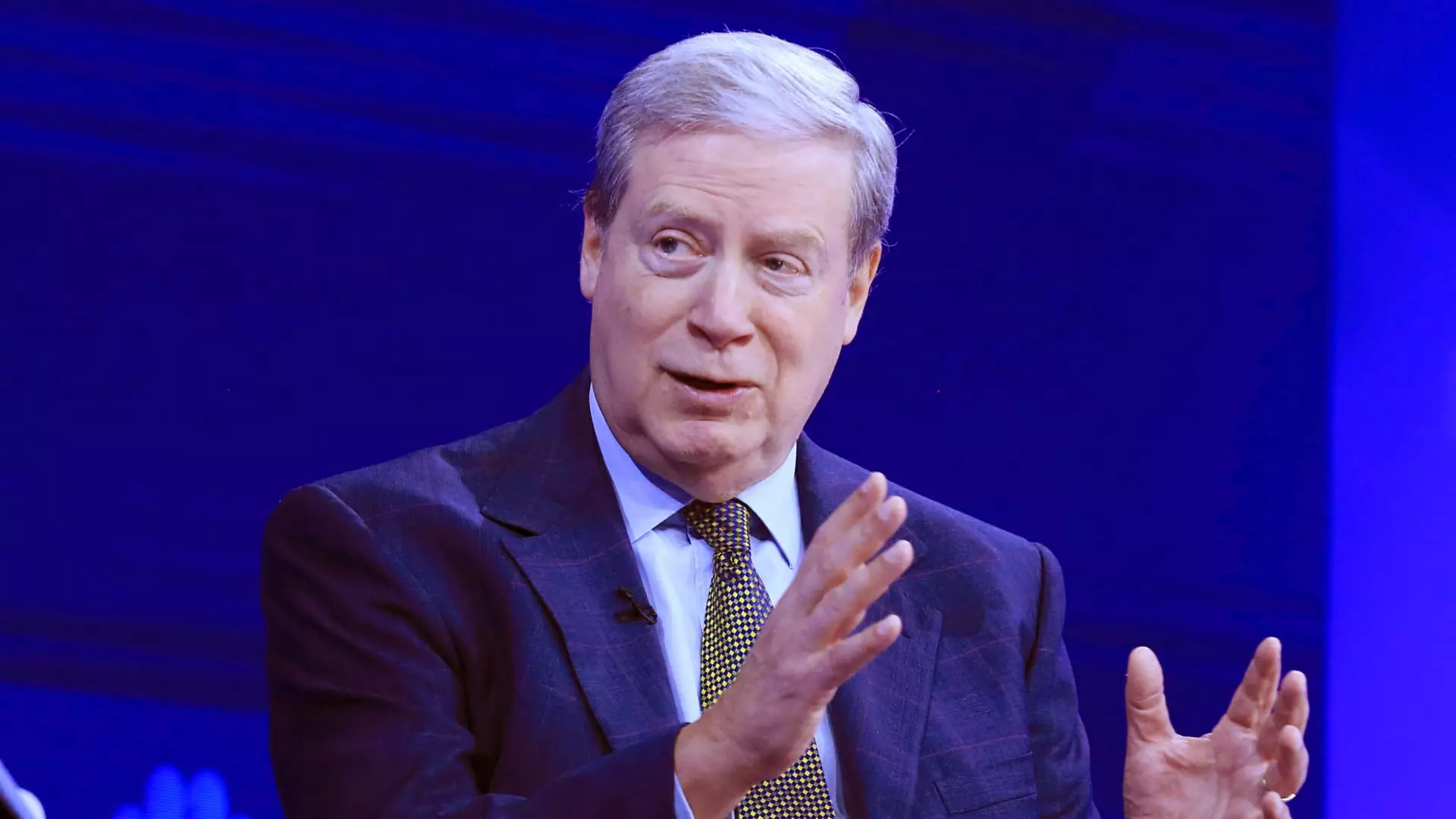The announcement of Donald Trump’s re-election has stirred a surge of enthusiasm within the financial market, a sentiment echoed by billionaire investor Stanley Druckenmiller. Having spent nearly five decades in the investment arena, Druckenmiller asserts that the political landscape has shifted dramatically from anti-business sentiment to one that is more favorable for corporate growth. This transformation, according to Druckenmiller, is reflected not only in the stock market movements but also in the palpable optimism expressed by company CEOs during discussions with him. Their collective sentiment ranges from relief to sheer excitement, capturing what Druckenmiller characterizes as a resurgence of “animal spirits”—an economic concept that underscores the bullish behavior of investors.
Nevertheless, while Druckenmiller acknowledges this immediate wave of positive sentiment, he also exercises caution regarding the stock market’s trajectory. Elevated bond yields pose a significant concern, prompting him to maintain a bearish stance on Treasury bonds, betting that their prices will decline. This duality—of optimism on the economic front and caution regarding market stability—paints a complex picture that investors need to navigate carefully.
For Druckenmiller, the interplay between a robust economy and rising bond yields complicates clear forecasting. His insights suggest a tense balance where a strong economy could lead to rising interest rates, which in turn may dampen the enthusiasm in the equity markets. While he remains optimistic about the immediate economic outlook, his reluctance to take a definitive position reflects an understanding of the intricate dynamics at play. Investors, he warns, must recognize this complexity rather than succumbing to a one-dimensional view of the market influenced solely by the recent political landscape.
In November, the S&P 500’s impressive near 6% rally in response to Trump’s victory illustrates how quickly market sentiment can change based on leadership expectations. With a significant increase of 23.3% year-to-date, riskier assets such as bank and energy stocks, along with cryptocurrencies like Bitcoin, have thrived thanks to Trump’s proposed tax cuts and deregulation policies. Here, Druckenmiller’s focus on individual stocks over broad market movements offers a strategic advantage for discerning investors who can identify companies that may benefit from these macroeconomic trends.
Druckenmiller emphasizes a cautious yet assertive investment strategy focused on individual stock selections rather than market indices. This strategy is particularly relevant in times of economic uncertainty. His interest lies in identifying companies poised to leverage artificial intelligence as a means of enhancing efficiency and reducing costs. His subtle avoidance of naming specific stocks post his divestment from high-profile companies like Nvidia and Microsoft raises questions about his future investment direction. This vagueness signals Druckenmiller’s strategy of maintaining a keen eye on underlying market trends while remaining discreet about his specific holdings.
While he acknowledges concerns around inflation tied to Trump’s proposed tariffs, he views these tariffs as a potential source of revenue to address the nation’s fiscal issues. This perspective reframes tariffs not merely as punitive measures but as consumption taxes that offer a temporary solution to the revenue shortfall. Despite the risk of retaliatory trade measures, he argues that the potential rewards can outweigh the downsides—especially if tariffs remain within a manageable increase range.
As the financial markets digest the implications of Trump’s policies and the evolving economic landscape, Druckenmiller encourages a balanced approach. His insights underscore the need for investors to maintain a broad perspective—understanding both the opportunities that arise from a pro-business administration and the risks associated with rising bond yields. The current environment presents a complex tapestry of possibilities, where individual stock analysis, awareness of fiscal policies, and market sentiment converge. Through careful navigation of these factors, investors may harness potential gains while minimizing risks—a mantra to guide their strategies in an ever-changing market dynamic.

